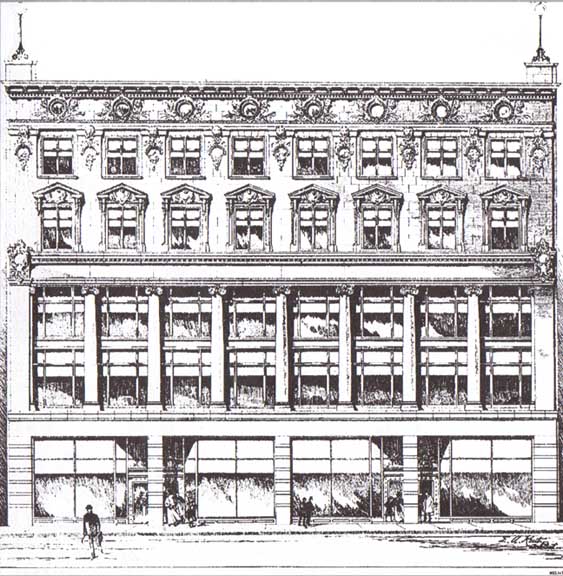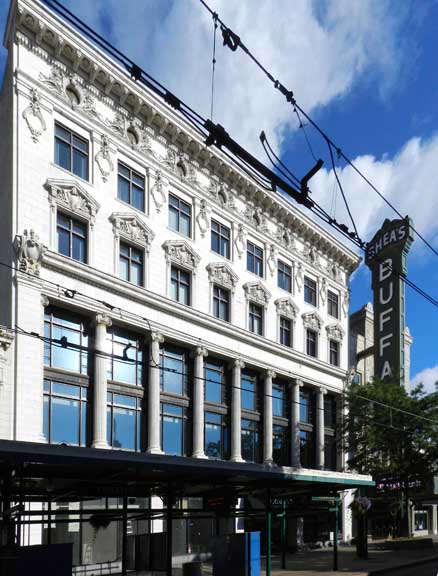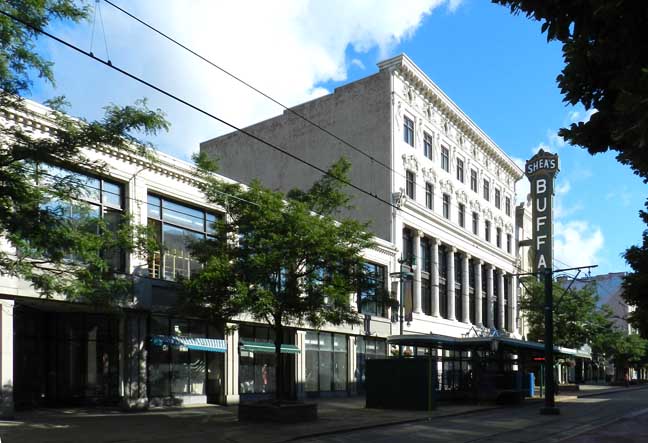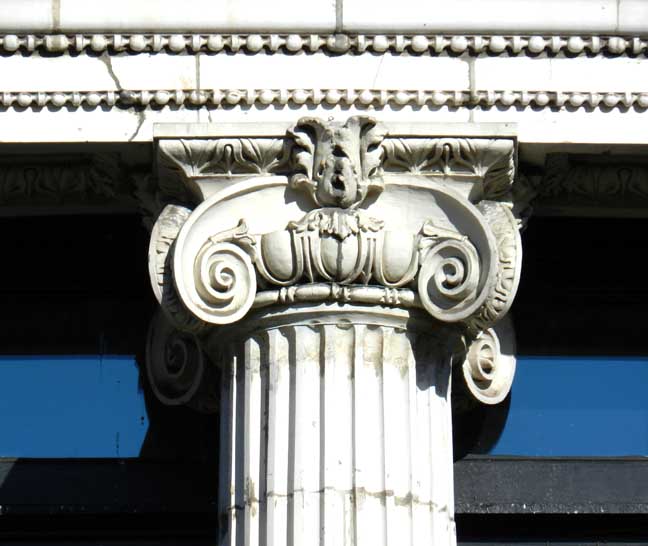Theatre Historic District - Table of Contents
Otto Store Building
/ Theater Place
A.K.A. the Otto-Kent Building
640 Main Street, Buffalo, NY
|
Theater Place - Official Web Site (July 2012) |
| Erected: | 1896 |
| Architect: | Edward Kent |
| Style: | Beaux Arts |
| First owner: |
"The Otto Building at 636-644
Main (also known as the Otto-Kent Building) was erected in 1896 by
William Otto, the descendant of Jacob Otto who had been a primary agent
of the Holland Land Company in Western New York." - Theater Historic Preservation District Nomination |
| See also: Building historic photo: |
1897 photo |
TEXT Beneath Illustrations
 Architect: Edward Kent  Architect's drawing. "In the case of the Otto store, perhaps Kent had a client who could not make up his mind about the style, because the Otto store looks like three distinctly buildings stacked on top of one another." - Illustration and quote from Victorian Buffalo, ed. by Cynthia Van Ness
|
Otto Building/Theater Place and Neighbors Otto Building/Theater Place  2002 photo. Contrast to the 2012 photo below. Otto Building features white, glazed terra cotta; Shea's features cream, glazed terra cotta.  2012 photo  Station and electrical lines are of the light rail rapid transit system on Main Street (free on above ground dedicated outdoors transit mall)  |
Otto Building/Theater Place - Architectural Details Beaux Arts style. Classical entablature above lion heads and cartouches  Top: Terra cotta ... Modillions decorated with acanthus leaves between panels with foliage ... Bead-and-reel molding ... Dentil molding ... Round window with egg molding flanked by cornucopia ... Bellflower(?) molding   Bead molding ... Ionic column ... Fluted shaft
 Egg-and-dart molding above bead-and-reel molding  Cartouche  Broken pediment |
